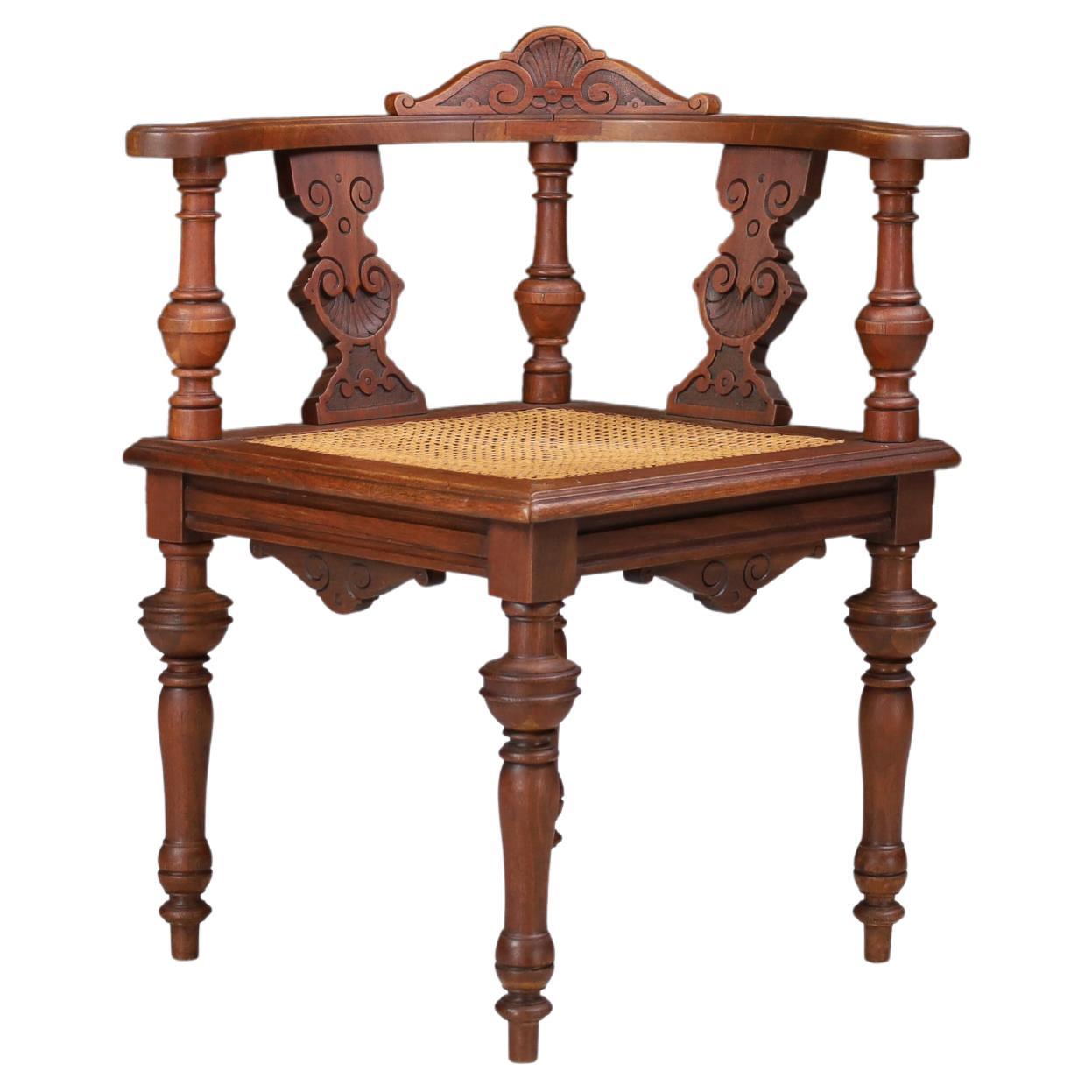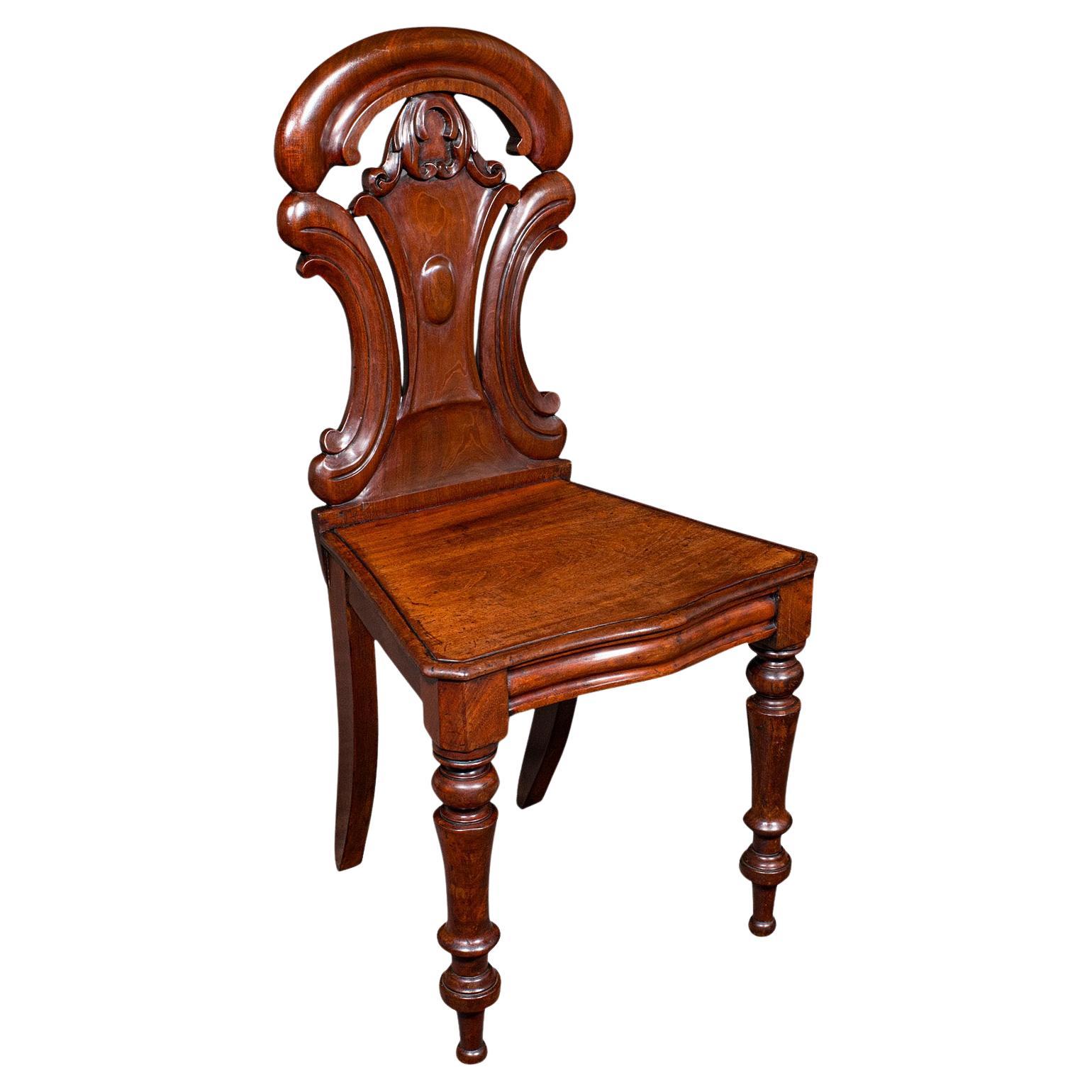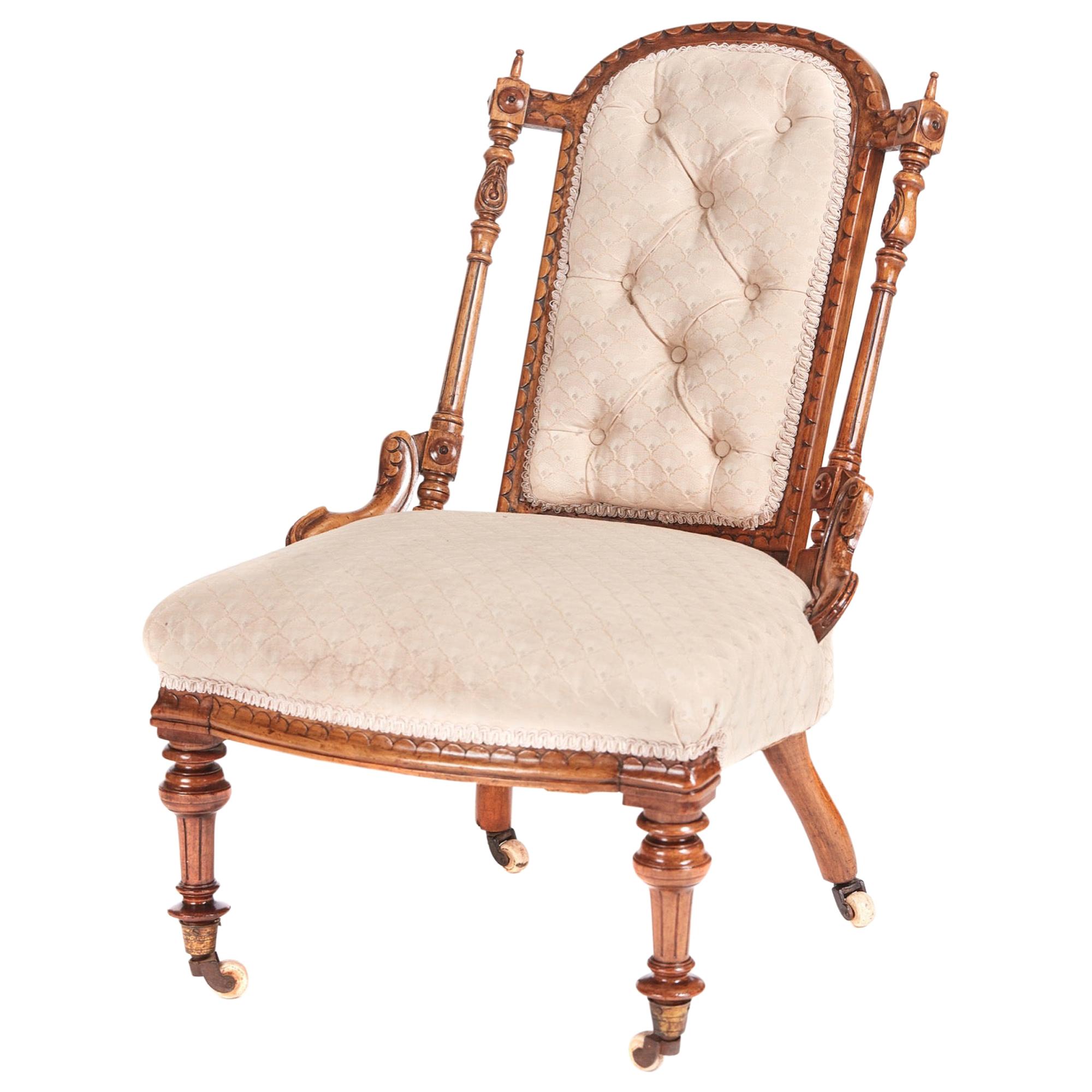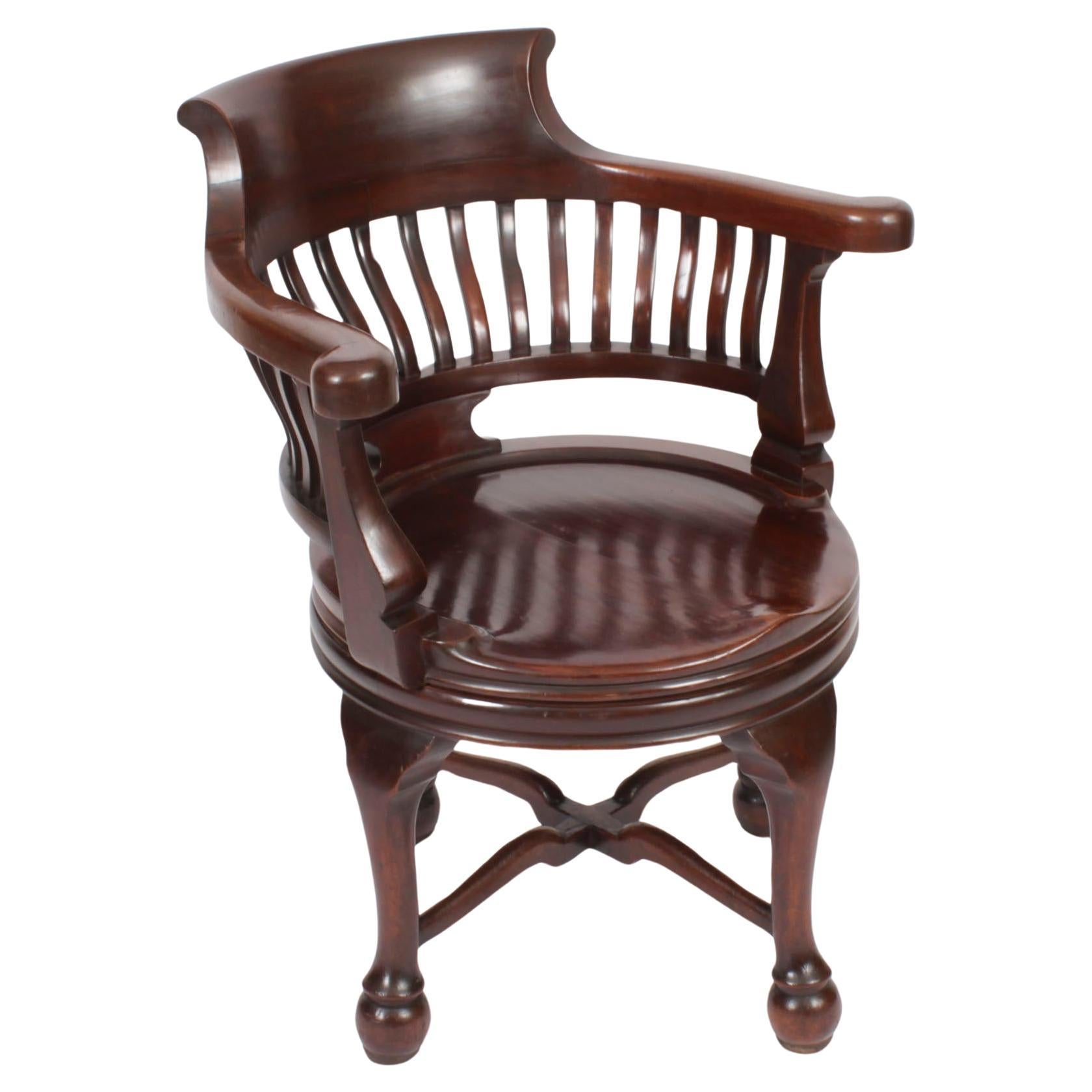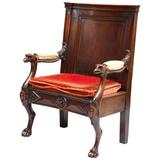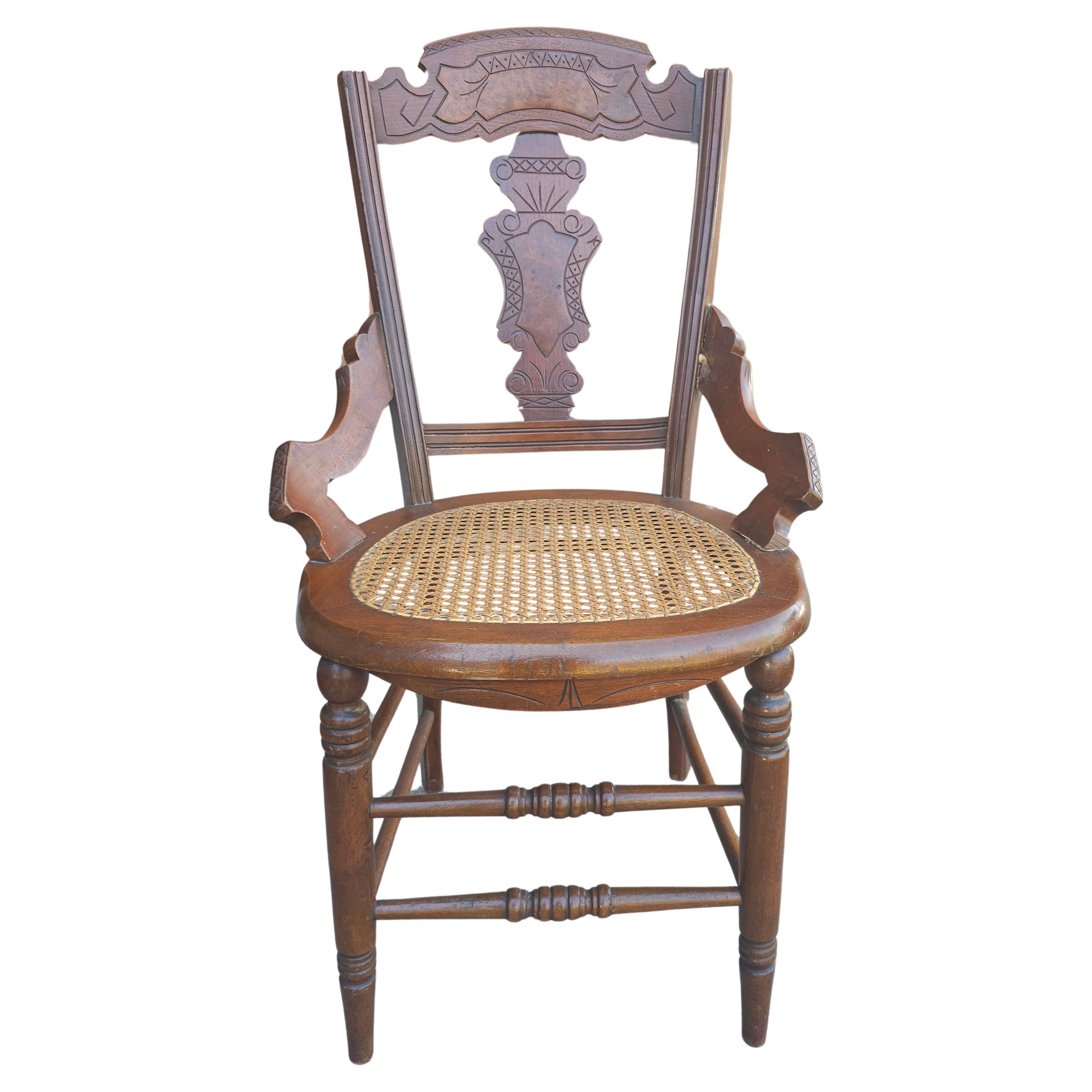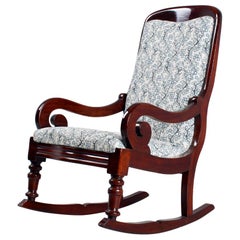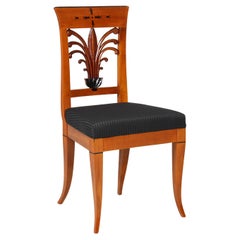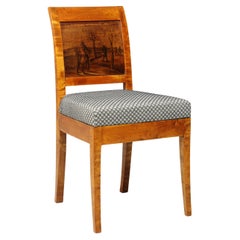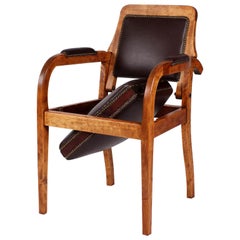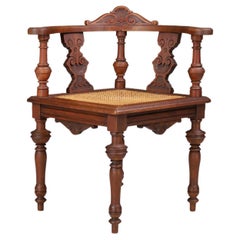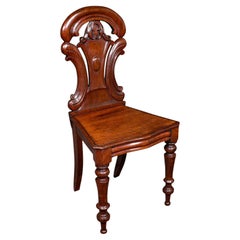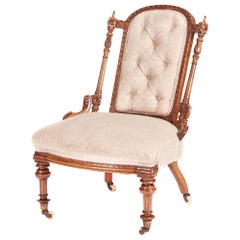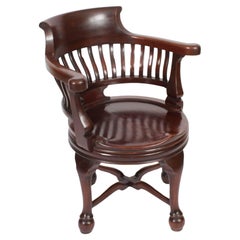Items Similar to 1880s German Piano Chair, Walnut, Height Adjustable
Video Loading
Want more images or videos?
Request additional images or videos from the seller
1 of 16
1880s German Piano Chair, Walnut, Height Adjustable
$3,869.07
£2,875.77
€3,250
CA$5,342.12
A$5,924.01
CHF 3,112.63
MX$72,381.35
NOK 38,943.23
SEK 36,554.87
DKK 24,747.12
About the Item
Antique height adjustable piano chair
Germany
Walnut
Wilhelminian period around 1890
Dimensions: H x W x D: 105 x 46 x 45 cm, seat height variable from H 46 - 58 cm
Description:
Quite extraordinary and extremely rare to find in this form piano chair.
The baluster legs in front are an absolutely style-typical design feature of the Wilhelminian period. The construction is maximally stable by means of an H-bracing between the legs.
The rectangular backrest has an elaborate crown with scroll-like volutes.
A striking feature is the column centered above the footrests, which houses the height adjustment mechanism.
A small lever on the right side of the seat releases the locking mechanism. The seat can now be moved up and down and locked in ten height positions. Beautiful and so lovingly made are the scales on the left and right under the backrest, which can be used to read off the current position.
The mechanism is marked in a circle of the sun:
D.R. Patent No 45215. (D.R. - Deutsches Reich - German Empire).
A unique piece of furniture and an absolute enrichment for any living room with antique piano. Also useable as high adjustable children chair.
Condition:
Refurbished and ready for everyday use condition. The surface has been cleaned and oiled. The former wicker was upholstered over in a previous restoration. The upholstery fabric used at the time was replaced with a horsehair cover.
- Dimensions:Height: 41.34 in (105 cm)Width: 18.12 in (46 cm)Depth: 17.72 in (45 cm)Seat Height: 19.69 in (50 cm)
- Materials and Techniques:
- Place of Origin:
- Period:
- Date of Manufacture:1880-1890
- Condition:Refinished. Wear consistent with age and use. Refurbished and ready for everyday use condition.
- Seller Location:Greven, DE
- Reference Number:1stDibs: LU5419235875942
About the Seller
4.9
Platinum Seller
Premium sellers with a 4.7+ rating and 24-hour response times
Established in 2014
1stDibs seller since 2020
195 sales on 1stDibs
Typical response time: <1 hour
- ShippingRetrieving quote...Shipping from: Münster, Germany
- Return Policy
Authenticity Guarantee
In the unlikely event there’s an issue with an item’s authenticity, contact us within 1 year for a full refund. DetailsMoney-Back Guarantee
If your item is not as described, is damaged in transit, or does not arrive, contact us within 7 days for a full refund. Details24-Hour Cancellation
You have a 24-hour grace period in which to reconsider your purchase, with no questions asked.Vetted Professional Sellers
Our world-class sellers must adhere to strict standards for service and quality, maintaining the integrity of our listings.Price-Match Guarantee
If you find that a seller listed the same item for a lower price elsewhere, we’ll match it.Trusted Global Delivery
Our best-in-class carrier network provides specialized shipping options worldwide, including custom delivery.More From This Seller
View All19th Century Biedermeier Rocking Chair, Mahogany, Germany, circa 1840
Located in Greven, DE
19th century antique rocking chair
North Germany
Mahogany
Late Biedermeier, around 1840
Dimensions:
Height: 97 cm, width: 5...
Category
Antique Mid-19th Century German Biedermeier Rocking Chairs
Materials
Mahogany
$2,571 Sale Price
20% Off
Early 19th Century Biedermeier Chair, Cherry, Germany (Bavaria) 1800-1810
Located in Greven, DE
Biedermeier Chair
South Germany
Cherry
early 19th century
Dimensions: H x W x D: 97 x 49 x 50 cm Seat height: 49 cm
Description:
Beautifully shaped chair, made of solid cherry in ...
Category
Antique Early 19th Century German Biedermeier Chairs
Materials
Cherry
19th Century Biedermeier Chair with Ink Painting, Northern Germany, circa 1820
Located in Greven, DE
Biedermeier Chair with Ink Painting
Northern Germany
Birch
Biedermeier circa 1820
Dimensions: H x W x D: 84 x 42 x 47 cm Seat height: 48 cm
Description:
Chair made of solid birch,...
Category
Antique 1820s German Biedermeier Chairs
Materials
Birch
1920s Barber Chair, Armchair, Germany, Birch
Located in Greven, DE
Antique barber chair
Germany
birch
1920's
Dimensions:
seat height 48 cm, total height 93 cm, width 58 cm
Description:
Straight armch...
Category
Vintage 1920s German Bauhaus Armchairs
Materials
Birch
Set of 10 Biedermeier Chairs, Ash, Southern Germany, First Half 19th Century
Located in Greven, DE
Ten identical Biedermeier board chairs
Southern Germany
Ash
First half of the 19th century
Dimensions:
H x W x D: 89 x 44 x 42 cm - Seat height board: 45 cm - with upholstered cush...
Category
Antique 1830s German Biedermeier Chairs
Materials
Ash
Set of Six French Directoire Chaires, signed J-E Coryn, circa 1800
Located in Greven, DE
Six identical antique chairs
France
Beech
Directoire around 1800
Dimensions: H x W x D: 87 x 45 x 41 cm, seat height: 46 cm
Description:
Beautiful set of provincial French chairs...
Category
Antique 1790s French Directoire Dining Room Chairs
Materials
Beech
You May Also Like
Antique German Corner Chair, Circa 1880 – Hand-Carved Walnut with Cane Seat
Located in Almelo, NL
Antique German Corner Chair, Circa 1880 – Hand-Carved Walnut with Cane Seat
A refined example of late 19th-century German craftsmanship, this antique corner chair...
Category
Antique 1880s German Rococo Corner Chairs
Materials
Cane, Walnut
Antique Hall Chair, Scottish, Walnut, Occasional, Reception Seat, Regency, 1820
Located in Hele, Devon, GB
This is an antique hall chair. A Scottish, walnut occasional reception seat, dating to the Regency period, circa 1820.
Attractive hallway chair, g...
Category
Antique Early 19th Century Scottish Regency Chairs
Materials
Walnut
Antique Victorian Carved Walnut Chair
Located in Suffolk, GB
Victorian antique carved walnut chair having a beautiful carved detail to the top, shaped back with elegantly carved shaped arms with a se...
Category
Antique Mid-19th Century English High Victorian Chairs
Materials
Walnut
Antique Victorian Walnut Revolving Desk Chair c.1880 19th Century
Located in London, GB
This is a superb antique late 19th Century walnut revolving desk chair, circa 1880 in date.
It is made of high quality solid solid walnut with a beautiful and decorative slatted ca...
Category
Antique 1880s Armchairs
Materials
Walnut
19th Century Walnut Throne Chair
Located in London, by appointment only
A substantial walnut throne chair, the curved back with arms terminating in eagle heads, the whole raised on zoomorphic legs terminating in lions p...
Category
Antique Mid-19th Century English Victorian Chairs
Materials
Walnut
20th Century Victorian Style Walnut and Cane Seat Side Chair
Located in Germantown, MD
20th Century Victorian Style Walnut and Cane Seat Side Chair. measures 20" in width, 20" in depth and stands 34.25" tall. Seat height is 17.75".
Category
Antique 19th Century American Victorian Side Chairs
Materials
Hardwood, Cane
More Ways To Browse
German Crown
Piano Leg
Antique Adjustable Chair
Antique Wicker Chair
Antique Wicker Furniture Chairs
Antique Footrest
Antique Piano Leg
Antique Piano Chair
Childrens Wicker Chair
Piano Chair Adjustable
United Chair Company Cantilever Chairs
Vintage Canopy Chair
Vintage Eames Molded Plastic Chairs
Wood Drafting Chair
Woven Rope Screen
Antique French Vanity Chair
Bentwood Foldable Chair
Biedermeier Danhauser
